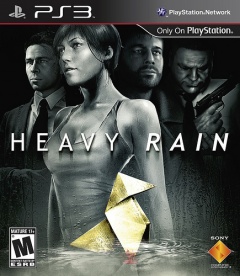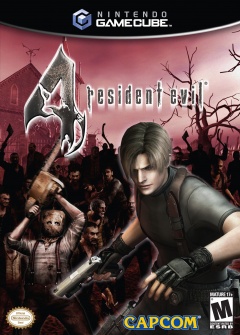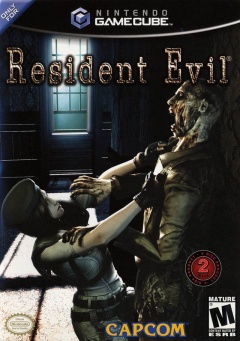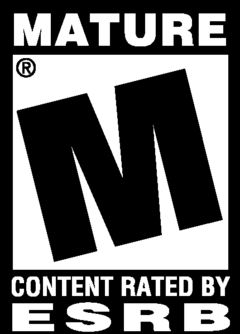resident evil
The QTE cure: Singin' in the Heavy Rain
 Quick Time Events. Ever since God of War and Resident Evil 4 exploded
onto the scene with button-prompt sequences of gore and horror, the
industry has shown its sheep-like nature and incorporated these Gotcha!
moments into games without thinking about how they make an
interactive experience better. Many gamers have adjusted to the fact
that every cutscene now has an awful series of play buttons throughout, but I
personally would like to cram all the QTEs in the world into a space
shuttle full of cobras and launch them directly into the sun if it meant
I'd never have to see another one again.
Quick Time Events. Ever since God of War and Resident Evil 4 exploded
onto the scene with button-prompt sequences of gore and horror, the
industry has shown its sheep-like nature and incorporated these Gotcha!
moments into games without thinking about how they make an
interactive experience better. Many gamers have adjusted to the fact
that every cutscene now has an awful series of play buttons throughout, but I
personally would like to cram all the QTEs in the world into a space
shuttle full of cobras and launch them directly into the sun if it meant
I'd never have to see another one again.
That said, it's not impossible to come across decent use of QTEs.
Indeed, before Resident Evil 4 set the standard at the advent of 2005,
the mechanic was most prominently-used by the Dreamcast's crown jewel,
Shenmue. In fact, it was Yu Suzuki, that game's director, who coined the
term "Quick Time Event." Suzuki put the gimmick to good use throughout
Shenmue, allowing protagonist Ryo Hazuki to do everything from tossing
drunkards around in bar brawls to saving little girls from incoming
soccer balls. One of the reasons the game is so beloved today is that it
allowed the player to engage in such a wide variety of scenarios, many
of which were supported with smartly-designed QTEs.
Good QTEs didn't end with Shenmue, however, even though sometimes it seems that's the case. Like God of War, other Playstation heavyweights have managed to use QTEs to enhance a game experience. I think it's only fair that we look at a few of those, as well as some alternatives to these timed button-prompts for cinematic flair in games.
The QTE plague: What hath God of War wrought?
 Quick Time Events. So many games have used them to some extent in the
last five years that just about every gamer has an opinion on them.
Mine is that they are the worst gameplay gimmick to take the industry by
storm in a long time, and I wouldn't mind seeing them all packed into a
burlap sack filled with leeches and thrown into the depths of a
volcano. They're tacky, they're unintuitive, and their attempts to
engage players in cinematic animations backfire and break the sense of
immersion one has with a game. And unfortunately for me, they're just
about everywhere these days.
Quick Time Events. So many games have used them to some extent in the
last five years that just about every gamer has an opinion on them.
Mine is that they are the worst gameplay gimmick to take the industry by
storm in a long time, and I wouldn't mind seeing them all packed into a
burlap sack filled with leeches and thrown into the depths of a
volcano. They're tacky, they're unintuitive, and their attempts to
engage players in cinematic animations backfire and break the sense of
immersion one has with a game. And unfortunately for me, they're just
about everywhere these days.
Two behemoths let loose in early 2005 can be thanked -- or blamed -- for the salvo of games that have featured QTEs in the last five years. The first, with a January 11 release date, was Resident Evil 4. The game was extremely well-received: it won many Game of the Year awards, offered a fresh take on the aging Resident Evil formula, and gave Gamecube owners a third-party exclusive worth bragging about. The other member of the gruesome twosome that brought us into the era of QTEs is known as God of War. Released just two months after Resident Evil 4, the game received just as many accolades and turned heads back to the PS2 as quickly as they'd been lost to the Gamecube's horror hit. Is it any wonder that the industry went in the direction it did when two such monumental successes as these both prominently featured a relatively unused gameplay gimmick?
Today we'll take a look at how the smart use of QTEs helped put these two games on the map, and watch a few examples of QTEs gone wrong. And trust me, there was a huge pool of resources for the latter.
Resident Evil
 Resident Evil is the original survival horror game. It didn't invent horror, but it definitely laid some groundwork as far as the genre went in video games. It was originally released in 1996 for the Sony PlayStation. In 2002, it was released as a remake for the GameCube in a surprising deal that had the series on Nintendo's system and eventually led to the stellar Resident Evil 4. It is the GameCube REmake (get it, RE stands for Resident Evil? Ah, nevermind) that I will be playing.
Resident Evil is the original survival horror game. It didn't invent horror, but it definitely laid some groundwork as far as the genre went in video games. It was originally released in 1996 for the Sony PlayStation. In 2002, it was released as a remake for the GameCube in a surprising deal that had the series on Nintendo's system and eventually led to the stellar Resident Evil 4. It is the GameCube REmake (get it, RE stands for Resident Evil? Ah, nevermind) that I will be playing.
So what I want to know is this: Is this game good, and is this game scary? I've played Resident Evil 4, and had a few good jumps, but overall it was just a moody action game (arguably becoming the basis of the modern third-person shooter). The original (and remake) had a lot more focus on puzzle solving and exploring, and less on fighting.
I'm going all out with this one. I'm playing at night, while everyone else is sleeping, with the lights off. Let's see if we can get a good scare out of this.
Nintendo DS M-Rated Blitz
 There are a total of six released M-rated Nintendo DS games: Grand Theft Auto: Chinatown Wars, theresia, Ultimate Mortal Kombat, Dementium: The Ward, Touch the Dead, and Resident: Evil Deadly Silence (one more game, C.O.R.E. has been rated but not released yet). For over 1100 rated titles on the Nintendo DS, there are just six games considered Mature by the ESRB! That's about one half percent of all DS games. Kotaku has some theories on this, but I'm not really one to analyze the market or audiences - I'm one to play the dang games.
There are a total of six released M-rated Nintendo DS games: Grand Theft Auto: Chinatown Wars, theresia, Ultimate Mortal Kombat, Dementium: The Ward, Touch the Dead, and Resident: Evil Deadly Silence (one more game, C.O.R.E. has been rated but not released yet). For over 1100 rated titles on the Nintendo DS, there are just six games considered Mature by the ESRB! That's about one half percent of all DS games. Kotaku has some theories on this, but I'm not really one to analyze the market or audiences - I'm one to play the dang games.
The following is going to be a 10 minute blitz of each of the six released M-rated games for the Nintendo DS, starting with the first released, Resident Evil: Deadly Silence, and finishing up with the recent Grand Theft Auto. I already had a friend review the first hour of Chinatown Wars, but a little overlap is okay. I'll say a few things about each game, play it for ten minutes, and then wrap each up with a few more notes about gameplay. I'll also decide if the first 10 minutes are worthy of the M-rating or not. Let's get this started.
This is also a taste of the new first hour review format. Less about numerical scores, more about what I liked and what I didn't. The reviews will be a bit more fleshed out next week as I have more room to roam. Enjoy.
